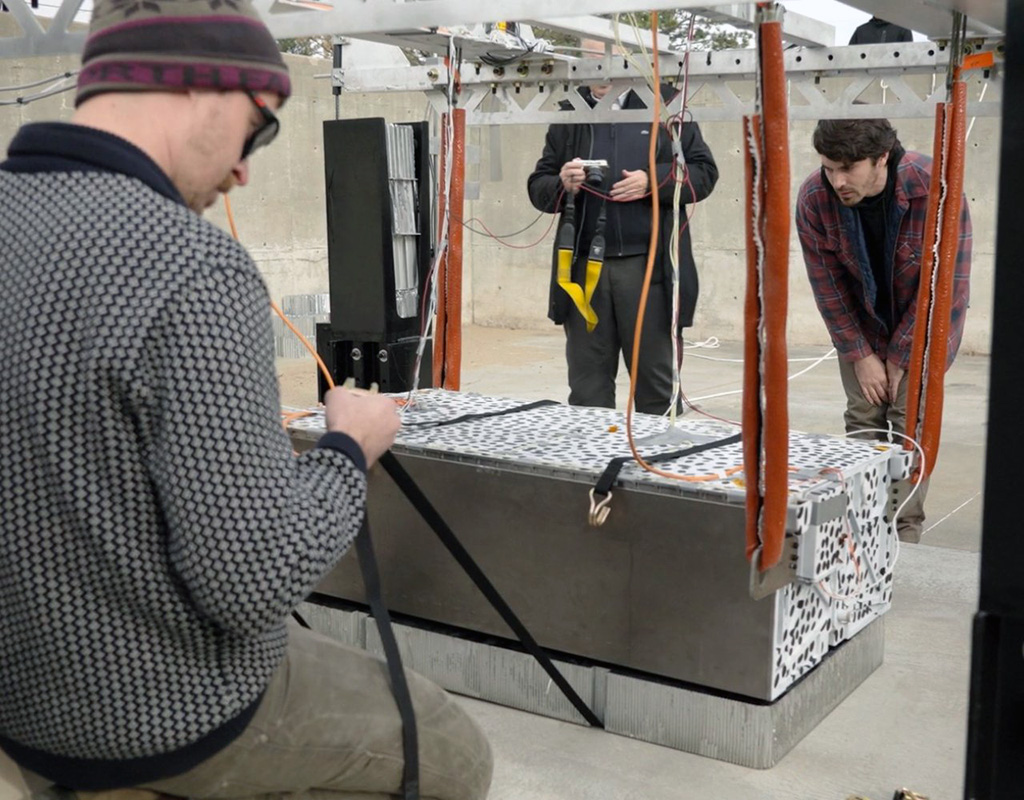
In a cross-sector collaboration with Beta Technologies, researchers at Wichita State University have successfully completed the first-ever 50-foot drop test of a full-scale eVTOL battery.
The test is part of a crashworthiness evaluation regime, and is seen as a critical milestone in the path to certification for Beta and other eVTOL companies.
“This test was a huge step forward for us, and for the industry as a whole,” said Sean Donovan, a member of the battery team at Beta Technologies. “This proves that a full-scale battery can withstand the impact of a 50-foot drop, and helps us progress our batteries on the path to certification.”
Beta Technologies provided an 800-volt battery pack for the test, completed Dec. 7, 2022, at the Jerry Moran Center for Advanced Virtual Engineering and Testing at the National Institute for Aviation Research (NIAR) at Wichita State.
Researchers suspended the battery from a large boom crane at an outdoor test site, then dropped it onto a solid platform 50 feet below.
The battery absorbed the drop load with no significant damage at the cell or pack level, and it is said to demonstrate completion of Beta’s intended means of compliance for a battery system.
This test was sponsored by the U.S. Federal Aviation Administration (FAA), and may serve as the foundation for various types of eVTOL battery testing in the future.
It also helped validate NIAR’s simulation modeling method, which will be used to promote safety and scalability in the eVTOL industry.
“Occupant safety is an integral part of the overall technical and management processes associated with the design, development, and operation of eVTOL transport systems,” said Gerardo Olivares, senior research scientist at NIAR, in a post on LinkedIn. “To guarantee occupant safety, it is necessary to evaluate and analyze the performance and behavior of the complete vehicle … during an emergency landing event.”
The purpose of battery-drop testing resembles the intent of 50-foot fuel tank drop tests that serve as a baseline safety requirement for helicopters and fixed-wing aircraft.
Just as fuel systems are monitored for leakage and fire after a 50-foot drop test, eVTOL battery systems are monitored for leakage, fire or explosion after a drop from the same distance.
The European Union Aviation Safety Agency (EASA) has adopted 50-foot drop tests as a starting point for eVTOL safety and risk assessments, and the FAA is also pursuing this path while researching more permanent evaluation methods.
“When the FAA and NIAR put out a call to the industry, we jumped at the chance to partner with them,” Donovan said. “Our battery packs, which Beta designs and builds in-house, are mature enough to deliver meaningful data, so it was a unique opportunity for us both to secure our own learnings to advance our packs, help validate NIAR’s simulation modeling for our own use and others’, and help set the foundation for safety and standards for the industry.”
This test program aims to provide the FAA and eVTOL companies with several additional insights — including whether thermal shielding is required to guard against fire or explosion, and whether composite materials are suitable to manufacture eVTOL fuselage.
Researchers also hope testing and simulation will demonstrate the risk of high-voltage discharge to eVTOL structures, occupants and first responders in the event of a crash.
“It was gratifying to see the result of the team’s hard work both in terms of the battery pack design and the extensive testing we’ve done at the component, cell, and subscale levels,” Donovan said. “As a company, we put a lot of weight and effort behind data capture and testing, and it’s encouraging to validate that a battery pack we’ve designed is as safe as we expected it to be.”

